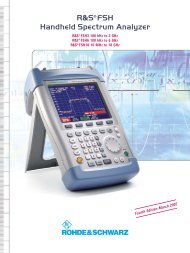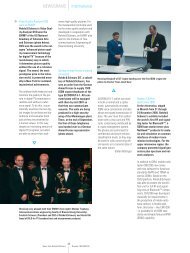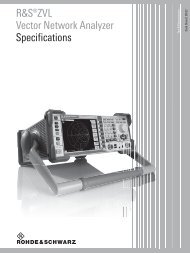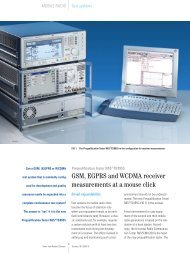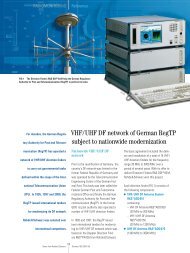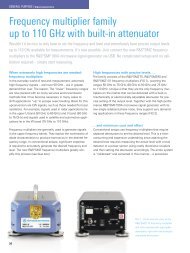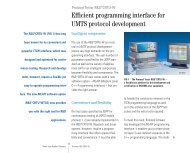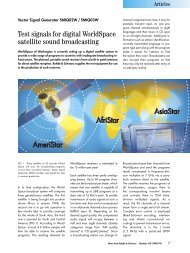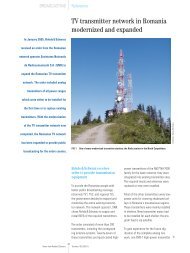English - Rohde & Schwarz
English - Rohde & Schwarz
English - Rohde & Schwarz
You also want an ePaper? Increase the reach of your titles
YUMPU automatically turns print PDFs into web optimized ePapers that Google loves.
MOBILE RADIO<br />
Coverage measurement systems<br />
for UMTS connections (FIG 3). In these<br />
cases, too, the incoming RF power at the<br />
mobile phone is at first sufficient. It is,<br />
however, partitioned into different paths<br />
which, depending on the quality of the<br />
mobile phone, provide a greater or lesser<br />
number of signal components for transmission.<br />
In the case of different signal<br />
delays, the orthogonality of all codes<br />
transmitted by a base station fades. This<br />
causes all signals sent by the server station,<br />
and in particular the signals of<br />
other subscribers, to strongly interfere<br />
with mobiles that have multipath reception.<br />
This CDMA-specific effect, which<br />
is not present in the case of FDMA and<br />
TDMA, calls for careful analysis of the<br />
multipath propagation when setting up<br />
and optimizing UMTS networks.<br />
PN scanners are superior<br />
to UMTS test mobiles<br />
Network operators face the challenge<br />
of making full use of the improved features<br />
of mobile radio coverage provided<br />
by UMTS technology. As with GSM networks,<br />
test mobiles are utilized with<br />
UMTS to determine the coverage quality.<br />
However, they cannot adequately<br />
determine the causes for poor quality.<br />
PN scanners are far better suited for<br />
these tasks, because they have superior<br />
characteristics compared to a terminal<br />
and can keep track of the overall situation,<br />
especially in difficult areas.<br />
In contrast to UMTS mobile phones<br />
that process only a few signals from<br />
the strongest paths of one or two base<br />
stations simultaneously, PN scanners<br />
must be able to measure the pilot carriers<br />
of any number of base stations in as<br />
many paths as possible so that interference<br />
such as pilot pollution, multipath<br />
propagation and fading can be reliably<br />
detected. This capability is provided in<br />
FIG 2 The pilot pollution map shows how many base station pilot signals<br />
within a channel exceed a power threshold value that is within a configurable<br />
spacing below the pilot power of the best server.<br />
FIG 3 Birth death fading, 3GPP-specified for mobile conformance tests,<br />
generated by the Signal Generator R&S SMIQ and measured with the<br />
R&S PN scanner. Two pseudo-randomly selected paths out of a total of 11<br />
are active with the same signal power on an alternating basis.<br />
News from <strong>Rohde</strong>&<strong>Schwarz</strong><br />
5<br />
Number 176 (2002/IV)



